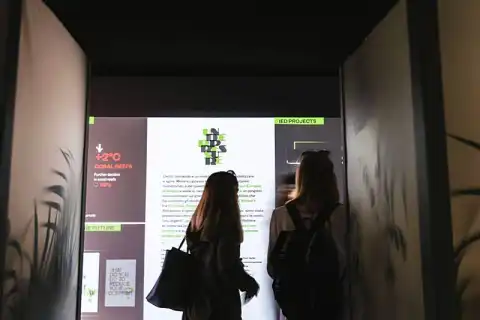Master of Arts - Interaction design
- 2 years
- Duration
- 20,400 EUR/year
- Price
- October
- Start
- May
- Deadline
- Master
- Degree
- Campus
- Format
- Turin / Italy
- Location
Program description
The focus of the MA in Interaction Design program is on understanding and creating novel ways in which people engage with technology and their surroundings.
An interdisciplinary and experimental approach is taken to develop tangible and intangible interfaces and devices in order to understand how digital transformation can be applied to design in a strategic and sustainable way. Technology is seen as a tool for creating meaningful interactions on social, cultural, environmental, and economic levels.
Integrating disciplines like digital sociology, creative coding, user experience, ethnography, and generative AI has the potential to foster the growth of autonomous critical thinking abilities while enhancing technological design capabilities.
Designers are able to tackle difficult challenges, take advantage of new technologies, and adapt quickly to society's changing needs because of this.
New relationships and experiences are formed as a result of all this. Students will get practical experience with course material through partnerships with industry companies and organizations during lab-based design learning sessions. Turin, with its rich history of industry and technology, has been a driving force behind the development of European interaction design, and the city has recently emerged as a major participant in a collaborative effort to promote innovation and excellence in the field.
Program structure
1st year
- Design methods
- Design 1
- Design 2
- Culture of the project
- Model building
- Drawing technologies and techniques
- Digital model - making techniques
2nd year
- Communication ethics
- Ecodesign
- Design methodology of visual communication
- Product design
- Design management
- Elective subject
- English
- Thesis project
Price
Fee for 1 year education is 20400.00 EUR for international students
Requirements for applicants
Admission requirements
For the Master of Arts (DASL) in Interaction Design. Crafting tomorrow’s experiences direct admission is foreseen for candidates coming from study courses in the following areas: Product Design, Graphics and Visual Communication. Candidates from other disciplines may be admitted following assessment of their preparation, according to the technical requirements specified below.
Software knowledge and technical skills requirements:
- Basic skills in graphics and layout: Candidates must possess fundamental skills in graphics and layout.
- Basic knowledge of the Adobe package: Basic knowledge of Adobe InDesign, Illustrator and Photoshop is required.
- Basic knowledge of 3D modeling softwares: Candidates must have introductory knowledge of 3D modeling softwares such as Fusion 360.
Language requirements
- To ensure course contents are fully understood, IED demands applicants a B2 level - Common European Framework of Reference for Languages - of the language in which the course is taught.
- To demonstrate the required language proficiency, non-native speakers must submit a language certificate or undergo a language test run by IED.
About the university

Since 1966, we have been the largest Higher Education Network in the creative area to keep both a worldwide perspective and a strongly Italian cultural matrix.
Our educational strategy has evolved over time, but at its core remains the same: we mix theoretical study with hands-on experience and the expertise of working experts. One of the things we emphasize in our classes is always thinking ahead, in the here and now. We are a diverse, multidisciplinary institution that views design as a tool for social transformation.
Among the many international academic networks in which we participate are Cumulus, Elia, and WDO, just to name a few.
Campuses
In the 1970s and 1980s, we expanded to Rome (1973), Cagliari (1984), and Turin (1989) in Italy.
Beginning in 1994 with the Madrid campus and continuing on to Barcelona in 2002, Spain's modern era began in the 1990s.
The Group also spread internationally, establishing a presence in Sao Paulo, Brazil, in 2005, and then in Venice, Italy, in 2007, Florence, Italy, in 2009, and Como, Italy, in 2009, with the acquisition of the Aldo Galli Academy of Fine Arts. The Group expanded its footprint in Brazil in 2014 by renovating the Cassino da Urca and opening a campus in Rio de Janeiro; in 2020, the Group will expand its presence in Spain by purchasing the Centro Superior de Diseo Kunsthal in Bilbao.
Read more about IED Istituto Europeo di Design, Italy, Spain, Brazil





